Bao-Thien Nguyen-Tat
DS@BioMed at ImageCLEFmedical Caption 2024: Enhanced Attention Mechanisms in Medical Caption Generation through Concept Detection Integration
Jun 01, 2024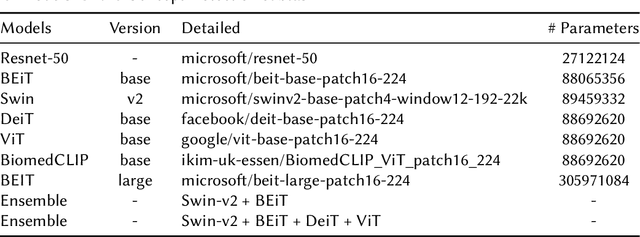
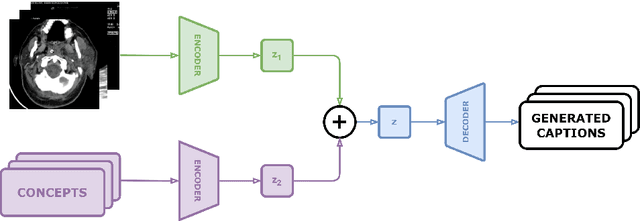
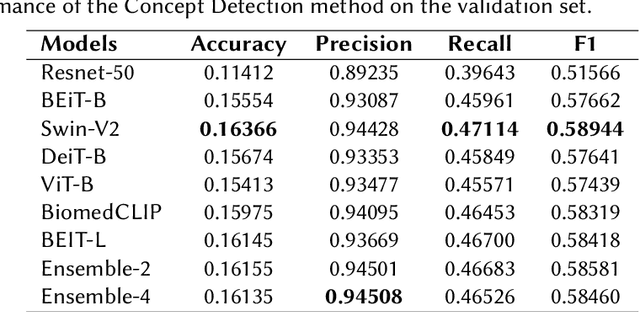
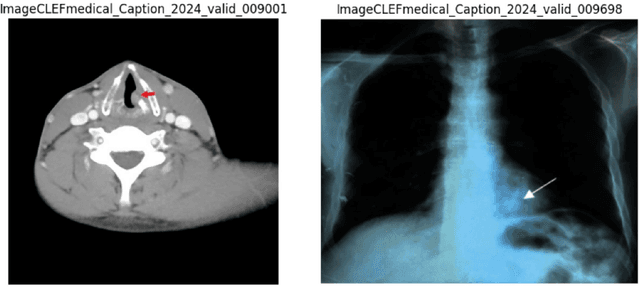
Abstract:Purpose: Our study presents an enhanced approach to medical image caption generation by integrating concept detection into attention mechanisms. Method: This method utilizes sophisticated models to identify critical concepts within medical images, which are then refined and incorporated into the caption generation process. Results: Our concept detection task, which employed the Swin-V2 model, achieved an F1 score of 0.58944 on the validation set and 0.61998 on the private test set, securing the third position. For the caption prediction task, our BEiT+BioBart model, enhanced with concept integration and post-processing techniques, attained a BERTScore of 0.60589 on the validation set and 0.5794 on the private test set, placing ninth. Conclusion: These results underscore the efficacy of concept-aware algorithms in generating precise and contextually appropriate medical descriptions. The findings demonstrate that our approach significantly improves the quality of medical image captions, highlighting its potential to enhance medical image interpretation and documentation, thereby contributing to improved healthcare outcomes.
UIT-DarkCow team at ImageCLEFmedical Caption 2024: Diagnostic Captioning for Radiology Images Efficiency with Transformer Models
May 28, 2024
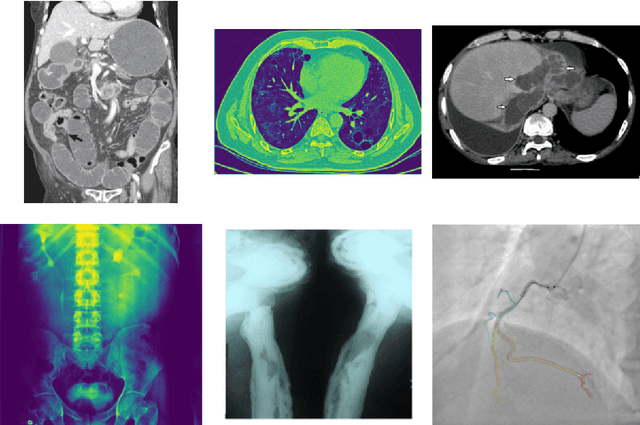

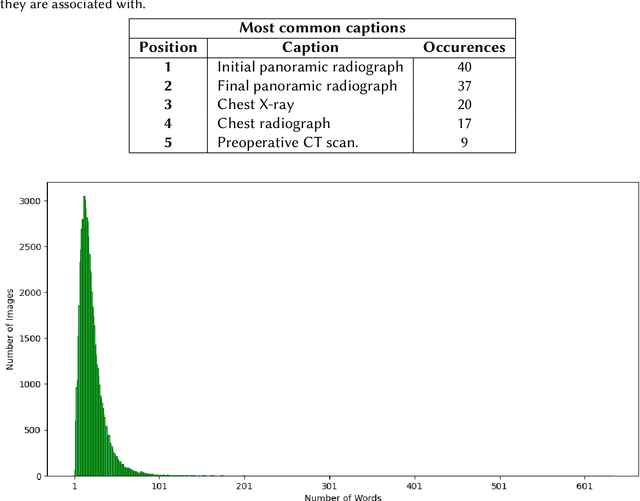
Abstract:Purpose: This study focuses on the development of automated text generation from radiology images, termed diagnostic captioning, to assist medical professionals in reducing clinical errors and improving productivity. The aim is to provide tools that enhance report quality and efficiency, which can significantly impact both clinical practice and deep learning research in the biomedical field. Methods: In our participation in the ImageCLEFmedical2024 Caption evaluation campaign, we explored caption prediction tasks using advanced Transformer-based models. We developed methods incorporating Transformer encoder-decoder and Query Transformer architectures. These models were trained and evaluated to generate diagnostic captions from radiology images. Results: Experimental evaluations demonstrated the effectiveness of our models, with the VisionDiagnostor-BioBART model achieving the highest BERTScore of 0.6267. This performance contributed to our team, DarkCow, achieving third place on the leaderboard. Conclusion: Our diagnostic captioning models show great promise in aiding medical professionals by generating high-quality reports efficiently. This approach can facilitate better data processing and performance optimization in medical imaging departments, ultimately benefiting healthcare delivery.
Automating Attendance Management in Human Resources: A Design Science Approach Using Computer Vision and Facial Recognition
May 21, 2024Abstract:Haar Cascade is a cost-effective and user-friendly machine learning-based algorithm for detecting objects in images and videos. Unlike Deep Learning algorithms, which typically require significant resources and expensive computing costs, it uses simple image processing techniques like edge detection and Haar features that are easy to comprehend and implement. By combining Haar Cascade with OpenCV2 on an embedded computer like the NVIDIA Jetson Nano, this system can accurately detect and match faces in a database for attendance tracking. This system aims to achieve several specific objectives that set it apart from existing solutions. It leverages Haar Cascade, enriched with carefully selected Haar features, such as Haar-like wavelets, and employs advanced edge detection techniques. These techniques enable precise face detection and matching in both images and videos, contributing to high accuracy and robust performance. By doing so, it minimizes manual intervention and reduces errors, thereby strengthening accountability. Additionally, the integration of OpenCV2 and the NVIDIA Jetson Nano optimizes processing efficiency, making it suitable for resource-constrained environments. This system caters to a diverse range of educational institutions, including schools, colleges, vocational training centers, and various workplace settings such as small businesses, offices, and factories. ... The system's affordability and efficiency democratize attendance management technology, making it accessible to a broader audience. Consequently, it has the potential to transform attendance tracking and management practices, ultimately leading to heightened productivity and accountability. In conclusion, this system represents a groundbreaking approach to attendance tracking and management...
 Add to Chrome
Add to Chrome Add to Firefox
Add to Firefox Add to Edge
Add to Edge